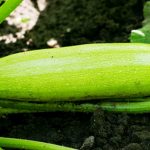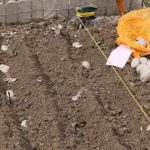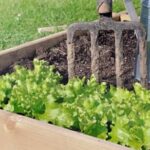What is square foot vegetable gardening? Square foot gardening is a method of gardening that allows you to grow a variety of vegetables in a small space using raised beds, dividers, and careful planning. This article will explore the history of square foot gardening, its benefits, how to plan and design your garden, essential tools and materials needed, selecting the right vegetables, maintenance and care tips, maximizing yield and space, as well as common mistakes to avoid.
The concept of square foot gardening was developed by Mel Bartholomew in the 1980s. It was designed to be a simple yet efficient way for people with limited space to grow their own fresh produce. Today, it has become increasingly popular due to its accessibility and productivity.
In this article, we will delve into the benefits of square foot vegetable gardening including its ability to maximize yield in a small area, its ease of maintenance and care compared to traditional gardens, as well as its potential for reducing water usage and minimizing weed growth. We will also discuss how you can plan and design your own square foot garden to make the most out of your available space.
Whether you are new to gardening or an experienced green thumb looking for new techniques, square foot gardening may be the perfect solution for your home or community garden.
The History of Square Foot Gardening
Square foot gardening is a method of gardening that involves dividing a growing area into small square sections, typically 1 foot by 1 foot, to help maximize space and simplify the process of growing vegetables. This method was popularized by Mel Bartholomew in his 1981 book “Square Foot Gardening,” which introduced the concept to gardeners looking for a more efficient and manageable way to grow their own produce.
The history of square foot gardening can be traced back to Bartholomew’s frustration with traditional row gardening methods, which often led to wasted space, overplanting, and difficulties in weed control. Inspired by the concept of raised bed gardening, Bartholomew developed the idea of dividing garden beds into smaller, more manageable squares, each dedicated to growing a specific vegetable or herb.
As word of Bartholomew’s innovative approach spread, square foot gardening gained popularity among home gardeners and even in educational settings. The method’s ease of use and adaptability made it an attractive option for people with limited space or mobility issues who still wanted to enjoy the benefits of growing their own fresh produce.
Despite its origins in the 1980s, square foot gardening has continued to evolve and gain widespread acceptance as a practical and efficient way to cultivate a bountiful vegetable garden in limited space. What is square foot vegetable gardening if not an effective solution for modern gardeners looking to make the most of their available land or container space?
- Simple and efficient way to maximize space
- Adaptability for various types of gardens
- Lack of wasted resources such as water, seeds, soil amendments
Benefits of Square Foot Vegetable Gardening
Square foot vegetable gardening offers a multitude of benefits for both seasoned and novice gardeners alike. This method, popularized by Mel Bartholomew in the 1980s, focuses on maximizing limited space by growing a variety of vegetables in designated square foot sections. This approach has gained popularity due to its efficiency, accessibility, and sustainability.
Increased Yield
One of the primary benefits of square foot vegetable gardening is its ability to maximize yield in a small space. By carefully planning and organizing the garden plots, individuals can grow a wide range of vegetables while minimizing wasted space. This makes it an ideal option for urban gardeners or those with limited outdoor space.
Reduced Maintenance
Compared to traditional row gardening, square foot vegetable gardening requires less maintenance and upkeep. The method’s layout allows for better control over weeds, pests, and diseases due to the close proximity of plants within each square foot section. Additionally, this approach promotes efficient use of water and fertilizer resources.
Accessibility and Versatility
Another key benefit of square foot vegetable gardening is its accessibility for individuals with physical limitations or restricted mobility. The raised bed design commonly used in this method enables gardeners to tend to their plants without having to bend or kneel extensively. Furthermore, the versatility of square foot gardening allows individuals to adapt their gardens based on available sunlight, soil conditions, and climate patterns.
How to Plan and Design a Square Foot Garden
Planning and designing a square foot garden is essential for the success of your vegetable garden. This method of gardening allows you to maximize the use of space and optimize the yield of your crops. Here are some key steps to consider when planning and designing your square foot garden.
Layout and Design
The first step in planning a square foot garden is to determine its layout and design. Consider the available space, sunlight exposure, and accessibility. You can create raised beds or use containers to define the different sections of your garden. It’s also important to consider pathways between the beds for easy access and maintenance.
Dividing Into Square Foot Sections
The concept of square foot gardening involves dividing your garden into smaller one-foot by one-foot sections. Each section is then planted with a different type of vegetable, herbs, or flowers. This method allows for efficient use of space while ensuring that plants have enough room to grow without overcrowding.
Soil Preparation
Before planting, it’s crucial to prepare the soil in each section of your square foot garden. Mix in compost or organic matter to improve soil fertility and texture. Consider using a soil mix specifically designed for square foot gardening, which typically consists of equal parts peat moss, vermiculite, and compost. This will provide plants with optimal growing conditions within each square foot section.
By following these planning and design tips for square foot gardening, you can make the most out of your available space while enjoying a bountiful harvest of fresh vegetables throughout the growing season.
Essential Tools and Materials for Square Foot Gardening
When it comes to square foot vegetable gardening, having the right tools and materials is essential for ensuring a successful and productive garden. One of the key elements of square foot gardening is creating well-defined and organized growing spaces within a designated area, which requires specific tools and materials to achieve.
Some essential tools for square foot gardening include a trowel for planting, a hand weeder for removing weeds, a hand cultivator for aerating the soil, and a small pair of pruning shears for harvesting. Additionally, having a sturdy garden rake, a watering can or hose with a nozzle attachment, and a set of measuring sticks are crucial for maintaining the proper spacing and layout of your square foot garden.
In terms of materials, constructing raised beds with untreated lumber or composite boards is common in square foot gardening. These raised beds help to define the growing spaces while also providing good drainage and allowing for various soil mixes to be used. Quality soil mix is also an important material for square foot gardening, as it provides the necessary nutrients and structure for optimal plant growth within each square foot.
Lastly, having access to compost or other organic fertilizers is beneficial for enriching the soil in your square foot garden. Compost helps replenish nutrients that can become depleted over time due to intensive planting in small areas. By having these essential tools and materials on hand, you can set yourself up for success in your square foot vegetable gardening endeavor.
In order to find out what material or tool works best from other experienced gardeners it might be smart searching on some online forums specialized in this type of gardening saying “Find out about” What Is Square Foot Gardening essentials”.
This search will give you much information about peoples’ experiences using certain materials vs others so you get an overall idea on what works best by given opinions instead of just relying in theory text books or informative articles like this one.
Selecting the Right Vegetables for Square Foot Gardening
When it comes to square foot gardening, choosing the right vegetables is essential for a successful and bountiful harvest. The concept of square foot gardening focuses on maximizing space and productivity by planting in 1×1 foot sections. This method allows for a wide variety of vegetables to be grown in a small area, making it ideal for those with limited space or beginner gardeners.
To make the most of your square foot garden, consider planting vegetables that are well-suited for this method. Here are some popular options:
- Leafy greens such as lettuce, spinach, and kale
- Root vegetables like carrots, radishes, and beets
- Compact varieties of tomatoes, peppers, and eggplant
- Climbing plants such as cucumbers and pole beans
These vegetables are generally well-suited for the compact spacing of square foot gardening and can thrive when planted closely together. Additionally, they tend to have a high yield in a small area, allowing you to make the most of your garden space.
When planning your square foot garden, it’s important to consider the specific needs of each vegetable. Some may require more sunlight or water than others, so be mindful of how you arrange your garden to ensure that each plant has the conditions it needs to thrive. With careful selection and planning, you can create a diverse and productive vegetable garden in just a few square feet.
Maintaining and Caring for Your Square Foot Garden
Once you have set up your square foot garden, it is important to maintain and care for it properly to ensure a successful harvest. Regular maintenance is essential in keeping your garden healthy and productive. This includes watering, weeding, and monitoring for pests and diseases.
Watering is a crucial aspect of square foot vegetable gardening. The aim is to keep the soil consistently moist but not waterlogged. Using a soaker hose or drip irrigation system can help deliver water directly to the plants’ roots, minimizing water waste through evaporation. It’s important to water in the morning to allow any excess moisture on the foliage to evaporate during the day and reduce the risk of fungal diseases.
Weeding is another vital task in caring for your square foot garden. Since the planting areas are densely packed, there’s little room for weeds to grow. However, it’s still important to check regularly and remove any weeds that may pop up. Additionally, keeping the pathways between the squares weed-free will help maintain a tidy and organized garden space.
| Task | Importance |
|---|---|
| Watering | Crucial aspect to keep soil moist but not waterlogged |
| Weeding | Prevents competition for resources and maintains an organized garden |
Monitoring for pests and diseases should be done regularly as well. Keep an eye out for any signs of pest infestations or plant diseases in your square foot garden. By catching these issues early, you can take appropriate measures to address them before they become severe problems that could affect your entire crop yield. Taking these steps will help ensure a healthy and thriving square foot vegetable garden throughout the growing season.
Proper care and maintenance are essential components of successful square foot vegetable gardening. By staying on top of watering, weeding, and pest monitoring, you can enjoy a bountiful harvest from your compact and efficient garden space.
Tips for Maximizing Yield and Space in Square Foot Gardening
When it comes to square foot vegetable gardening, maximizing yield and space is essential for a successful garden. By using the square foot gardening method, gardeners can efficiently use their space to produce bountiful harvests. One of the key principles of this method is to carefully plan and organize the garden in a way that optimizes the available space.
To maximize yield and space in square foot gardening, it’s important to consider vertical gardening techniques. Using trellises, stakes, or cages can help support vining vegetables such as tomatoes, cucumbers, and beans, allowing them to grow upwards rather than sprawl across the garden. This not only saves valuable ground space but also helps improve air circulation and sunlight exposure for the plants.
Another tip for maximizing yield and space in square foot gardening is succession planting. This involves planting new crops as soon as one crop is harvested, extending the growing season and increasing overall yield. By carefully planning which vegetables to plant after harvesting others, gardeners can make the most of their available space throughout the growing season.
In addition to vertical gardening and succession planting, intercropping is another strategy for maximizing yield and space in square foot gardening. This involves planting different types of vegetables together in the same area, taking advantage of complementary growth patterns and spacing requirements. For example, fast-growing lettuce can be planted alongside slow-growing carrots, making efficient use of space while also providing a variety of fresh produce from the garden.
Common Mistakes to Avoid in Square Foot Vegetable Gardening
When embarking on the journey of square foot vegetable gardening, it’s essential to be aware of common mistakes that can hinder the success of your garden. By avoiding these pitfalls, you can ensure a thriving and bountiful harvest from your square foot garden.
One common mistake to avoid in square foot vegetable gardening is overcrowding. It can be tempting to plant as many vegetables as possible in each square foot, but overcrowding can lead to stunted growth and competition for nutrients. It’s important to follow the recommended spacing for each type of vegetable to allow them room to grow properly.
Another mistake is neglecting proper soil preparation. The quality of the soil is crucial for the success of a square foot garden. Failing to invest time and effort into preparing nutrient-rich soil can result in poor growth and low yield. Adding compost and other organic matter to the soil before planting is essential for providing essential nutrients to your vegetables.
Furthermore, not paying attention to watering needs is a common mistake in square foot gardening. Different vegetables have different water requirements, and it’s important to understand these needs to avoid under or overwatering. Implementing a proper watering schedule and using techniques such as drip irrigation or soaker hoses can help maintain optimal soil moisture for your square foot garden.
By being mindful of these common mistakes, you can set yourself up for success in your square foot vegetable gardening endeavors. Taking the time to plan, prepare, and care for your garden will ultimately result in a bountiful harvest of fresh and healthy produce.
Conclusion and Resources for Further Information
In conclusion, square foot vegetable gardening is a fantastic and efficient way to grow your own produce in a limited space. This method has been around for decades and continues to gain popularity due to its numerous benefits. By using the simple yet effective planning and design principles, along with the right tools and materials, anyone can create a thriving square foot garden.
One of the greatest advantages of square foot gardening is the ability to maximize yield and space. With proper care and maintenance, you can grow a variety of vegetables in a small area, making it ideal for urban dwellers or those with limited backyard space. Additionally, by avoiding common mistakes such as over-planting or neglecting proper soil maintenance, you can ensure the success of your garden.
For those interested in learning more about square foot vegetable gardening, there are plenty of resources available for further information. From books and online guides to community workshops and forums, there are countless opportunities to expand your knowledge and skills in this area. Whether you are a novice gardener or have years of experience, square foot gardening offers a practical and rewarding approach to growing your own fresh produce at home.
Frequently Asked Questions
What Is the Square Foot Method for Vegetable Gardens?
The Square Foot Method for vegetable gardens involves dividing the garden into square foot sections to maximize space and yield. Each section is carefully planned and planted with specific vegetables based on their space requirements.
What Is the Concept of Square Foot Gardening?
The concept of Square Foot Gardening revolves around the idea of growing more in less space by dividing the garden bed into 1-foot by 1-foot sections. This method allows for intensive planting, efficient use of space, and easier maintenance.
What Is the Square Foot Gardening Idea?
The Square Foot Gardening idea was popularized by Mel Bartholomew and emphasizes the use of raised beds, a specific soil mix, and careful spacing to maximize productivity. It aims to make gardening accessible, manageable, and productive for all types of gardeners.

If you’re looking to get into vegetable gardening, or are just looking for some tips on how to make your current garden better, then you’ve come to the right place! My name is Ethel and I have been gardening for years. In this blog, I’m going to share with you some of my best tips on how to create a successful vegetable garden.





